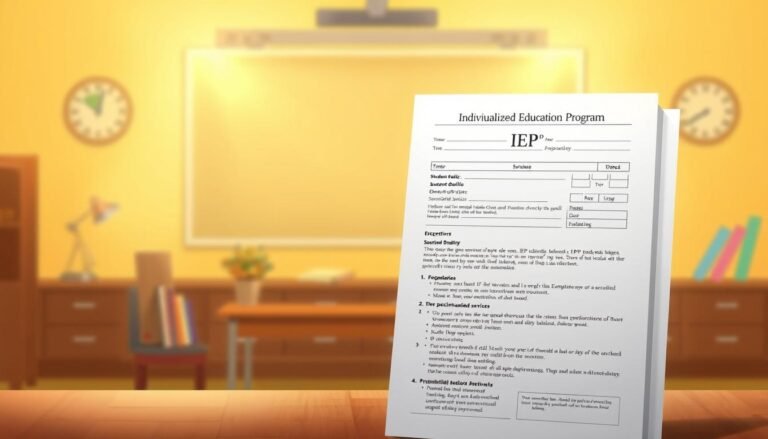
Understanding Together: Essential Ways to Constructively Address Learning Disabilities with Your Child
Introduction
In today’s rapidly evolving world, the importance of education cannot be overstated. However, for some children, traditional learning environments can pose significant challenges. Addressing learning disabilities is not just a necessity but a crucial stepping stone toward creating successful, thriving individuals. Understanding Together: Constructive Ways to Address Learning Disabilities with Your Child is the phrase that encapsulates a unified approach to support your child in overcoming these obstacles. This article delves into practical strategies, case studies, and insights to unravel this essential topic while empowering parents to engage in constructive dialogue with their children.
Learning Disabilities: An Overview
What Are Learning Disabilities?
Learning disabilities are neurological disorders that affect the brain’s ability to receive, process, or communicate information. They can vary significantly from one child to another and often impact skills such as reading, writing, and mathematics. Understanding that these challenges stem from differences in brain function is the first step in addressing them constructively.
Types of Learning Disabilities
- Dyslexia: Challenges with reading and language processing.
- Dyscalculia: Difficulties with number-related concepts and math skills.
- Dysgraphia: Issues with handwriting and fine motor skills.
- Auditory Processing Disorder (APD): Trouble processing sounds and verbal information.
- Nonverbal Learning Disabilities: Difficulties with nonverbal cues and social interactions.
Understanding Your Child’s Needs
Building a Connection
To foster a supportive environment, it’s essential to establish a connection with your child. By embracing the philosophy of Understanding Together: Constructive Ways to Address Learning Disabilities with Your Child, parents can create a safe space where their child feels comfortable expressing frustrations and fears.
Case Study: Emily’s Journey
Emily, a 10-year-old with dyslexia, struggled in a traditional classroom setting. Her parents adopted a communicative approach, engaging her in discussions about her experiences. This open dialogue led to identifying the right resources tailored for her needs, such as specialized tutoring and assistive technology. Emily thrived more when she felt heard and supported.
Importance of Empathy
Empathy acts as a bridge to understanding. When parents acknowledge their child’s struggles and validate their feelings, it reinforces trust and openness. Engaging in discussions about learning disabilities fosters resilience in children.
Constructive Strategies for Parents
1. Collaborate with Educators
Partnering with teachers and school staff is vital in addressing your child’s learning needs. Share insights from home and develop a team approach to implement effective strategies.
Tips for Collaboration:
- Schedule regular meetings with teachers.
- Share your child’s interests to make learning more relevant.
- Advocate for accommodations, like extended test time or alternative assignments.
Table 1: Effective Communication Techniques with Educators
| Technique | Description |
|---|---|
| Active Listening | Pay attention and confirm understanding of needs. |
| Constructive Feedback | Provide specific examples of challenges observed. |
| Goal Setting | Collaborate on realistic and achievable objectives. |
2. Create a Structured Environment
Children with learning disabilities benefit from a routine that provides clarity and predictability. Establishing a consistent homework schedule helps them develop time management and organizational skills.
Case Study: Michael’s Structured Space
Michael’s parents transformed his study area into an organized, distraction-free zone. They provided tools like visual schedules and timers. This structure greatly improved his focus and academic performance.
3. Embrace Multisensory Learning
Many children with learning disabilities respond better to multisensory approaches to learning, which engage various senses.
- Tactile Learning: Use physical objects for math problems.
- Visual Aids: Incorporate charts, diagrams, and colored texts.
- Auditory Learning: Encourage reading aloud and listening to audiobooks.
Chart 1: Learning Styles and Techniques
| Learning Style | Recommended Techniques |
|---|---|
| Visual | Diagrams, color-coded notes, flashcards |
| Auditory | Discussions, audiobooks, podcasts |
| Kinesthetic | Hands-on activities, models, role-playing |
4. Leverage Technology
Technology offers a plethora of resources for children with learning disabilities. Tools like speech-to-text software, educational apps, and interactive games can enhance learning experiences.
Case Study: Sarah Explores Technology
Sarah, who struggles with writing, found success using dictation software. This tool allowed her to express her thoughts more freely, fostering her creativity and confidence.
Promoting Emotional Well-Being
Encourage Self-Advocacy
Teach your child to express their needs and preferences. Self-advocacy empowers them and fosters independence.
Build Resilience
Every challenge provides an opportunity for growth. Celebrate small victories and encourage problem-solving when faced with setbacks.
Case Study: Alex’s Growth Through Challenges
Alex, a high school student with nonverbal learning disabilities, faced social challenges. His parents encouraged him to join clubs that aligned with his interests, promoting social skills and confidence. Over time, Alex became more at ease in social settings, demonstrating that overcoming challenges enhances resilience.
Conclusion
Understanding Together: Constructive Ways to Address Learning Disabilities with Your Child is a journey that requires patience, empathy, and persistence. By forming a dialogue with your child and employing diverse strategies, you can create an environment conducive to learning and self-discovery. Understanding their unique needs will help pave the way for their success. Remember, the challenges your child faces are not insurmountable; instead, they provide opportunities for growth and resilience.
FAQs
1. What are the initial signs of learning disabilities?
Common signs include difficulties in reading, writing, math, and following instructions. If you notice persistent struggles despite adequate support, consult a professional.
2. How can I effectively communicate with my child about their learning disability?
Start by using simple language, expressing understanding, and focusing on strengths. Encourage questions and create a safe space for dialogue.
3. What resources are available for parents of children with learning disabilities?
Look for local support groups, online communities, educational websites, and specialized tutors or therapists.
4. How can I help my child develop resilience in the face of challenges?
Foster a growth mindset by emphasizing effort over outcome. Celebrate accomplishments, no matter how small, and encourage your child to view setbacks as learning opportunities.
5. At what age can learning disabilities be diagnosed?
Learning disabilities can be identified as early as preschool. Early intervention is crucial for effective support, so consulting a professional if you suspect a problem is essential.
By integrating the insights from this article into your parenting approach, you can truly embark on the journey of Understanding Together: Constructive Ways to Address Learning Disabilities with Your Child. Allow your child to shine brightly, embracing their potential.
















